Nature; the word itself is therapeutic. When I hear the word, I think of mountains and forests. Forests and wildlife have been an important part of my growing up years, and now are one of my most preferred places to visit.
The calmness of the jungle, the smell of the trees, the chirping of birds, the sounds of the animals, all work like therapy for me and are completely rejuvenating.
The wildlife we all feel just exists in our ecosystem. But, this is wrong. Wildlife is an important aspect and plays a very crucial role in our daily lives. Without wildlife, the existence of humans will be at stake.
This is why it is important to teach kids to respect wildlife and that too from a young age. The only exposure we usually give our kids to animals is the pets and that too mostly cats and dogs. But, that is not all that they need to know about animals.
Wildlife as seen in forests and national parks is different from the pets and also from the animals they see at the zoo. And these are facts that should be introduced at a young age to be able to teach kids to respect wildlife.
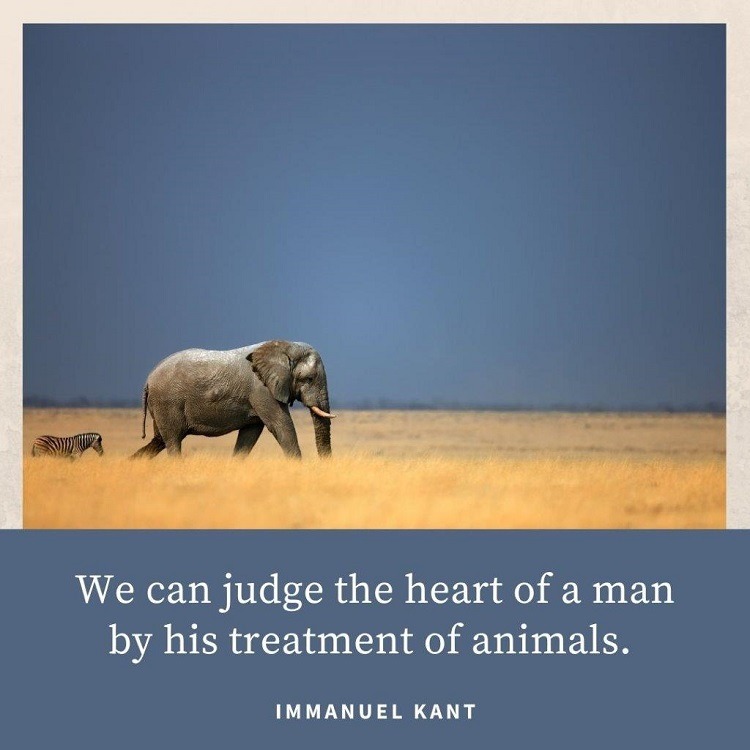
Table of Contents
Why Should We Teach Kids to Respect Wildlife?
This is a question that many would have. Why should we bother to teach our kids to respect wildlife especially when there is so much to teach them which have an impact on their growth and future?
Yes, this is a valid question. In times of availability of courses on foreign languages, coding classes, dance and music, and many others, why should we focus on teaching about wildlife? There are three main reasons for this.
- Children who learn to respect nature, become conscious of their environment, and learn to appreciate it. This is what builds the foundation of their love for nature and caring for it and ensuring its safety becomes a part of them. This leads to a more sustainable and healthier future.
- Another very important reason why you should teach kids to respect wildlife is that kids who love animals are bound to grow up to be more caring, considerate, and kinder. If kids can respect the space and understand the needs of an animal who cannot speak, they are bound to be more empathetic towards their peers.
- The third reason is that it is a known fact that kids learn better in nature. We will talk about this in detail in the next section.
Kids Learn Better in Nature
There are various studies and researches which show that being outside helps everyone. And this holds true more in the case of the present generation and this is because of their overexposure to technology and urbanization.
Children who spend time outside are known to be emotionally, socially and physically strong apart from the behavioral benefits.
Sending the child to play in the park daily is definitely encouraging them to spend time outdoors and this has many benefits for sure. Our post, Why Do I Take My Baby To The Park Daily talks about some of them.
Research shows that children benefit more when they spend more time in nature which is wild and does not have too much human touch and is more natural. This increases the love for nature and also increases curiosity.

National parks are a great place to teach kids to respect wildlife. Teaching about nature and the wild is more of the responsibility of parents than teachers and thus, a conscious effort is helpful.
As a child, most of my family holidays were to the hills and forests and national parks. My love for wildlife came to me naturally because of the exposure my father gave me. Today, as a parent I have introduced Little Miss A to wildlife and safaris in national parks, and this has created a connection with nature and a love for animals.
National parks and zoos are not the only ways to teach kids to respect wildlife. I understand this is not practical for some and for many might not be of interest.
There are many other simple ways to introduce kids to wildlife. Let us discuss them in detail in the next section.
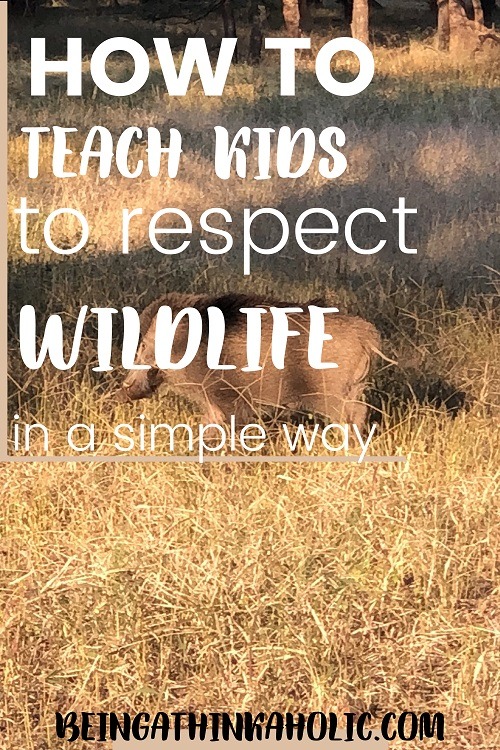
How to Teach Kids To Respect Wildlife
Many parents wonder how to introduce wild animals to preschoolers. This is not something very difficult. In fact, there are some very simple ways to teach kids about wildlife and also initiate respect for wildlife. Because of my love for the animals, Miss A was introduced to them very early.
Following are some of the ways I used with her.
(Please note, the following part might have affiliate links. If you buy using the links, I earn a small commission at no extra cost to you.)
Flash Cards
For those who know me, they know I am a big fan of right brain education for kids. To those who don’t or who are new to this concept, should read my post on the Importance of Right Brain Education for your Child.
Flash cards have been one of my favorite tools to introduce concepts to Little Miss A, since a very early age. I used them for both wild and domestic animals and I remember, though she could not talk how she loved looking at the pictures and tried to make sounds.
I used cards from Love Laugh Learn by Nitika. Her Instagram page is, https://www.instagram.com/lovelaughlearnbynitika/. Nitika has flash cards on various other topics as well.
Animal Figures
Figures of wild animals are one of the simplest ways to introduce the different wild animals to the child. When the kids understand how they look like, they relate more and to teach them to respect wildlife becomes easier.
Animal figures can be used from a very early age and are used for a long time. These are a great open ended toy for kids as they keep using their imagination and making new games.
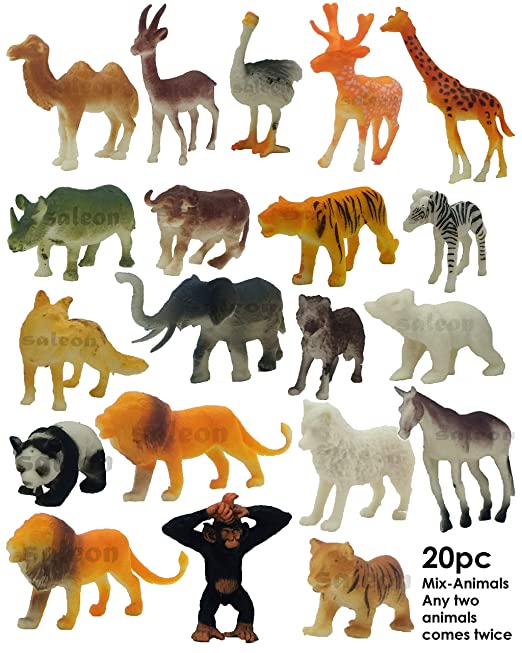
Let me tell you since 18 months till date how has Miss A used them:
- She started with identifying them
- Then we went on to their sounds
- She then learnt their young ones
- When she learnt continents, we spoke about which animals are native to which one
- Used as a memory game
- Presently they are a part of her pretend play family (as she calls it). Each day is a new game, and this is something she invents
A simple toy has many uses and parents and kids find new ways to use them. There are many options available and some have dual purpose like the Montessori Toy by Toyshine.
Puzzles
Another tool which helped us were animal puzzles. There are various available in the market and for different age groups.
The first one I used was Melissa and Doug Safari Wooden Chunky Puzzle. Another one which I know is great is by Skillofun. These can be introduced at about 18-24 months, depending on the child and their interest.

Around the age of 3, we started using wooden block puzzles like the ones by Funblast.
Around this time we also started with the wild animal puzzle by Shumee. The latter also is a great way to teach ABC so this puzzle works on two concepts.
The Snap game by Shumee is one of our favorite family games to play with Miss A and she loves giving names to wild animals.
The one we are using currently is 12 piece puzzles by Skillofun.
Visits to the Zoo
Parents who do not know how to introduce wild animals to preschoolers I suggest to start with the above three ways. Once these have been introduced to the child and they recognize the animals, a very simple way is to plan a trip to the zoo.
Many cities in the country and abroad have zoos. When planning a holiday, we always checked for zoos and made it a point to visit them. This made for a great day out doing child centric things. Some of the zoos we have visited in the last four years are:
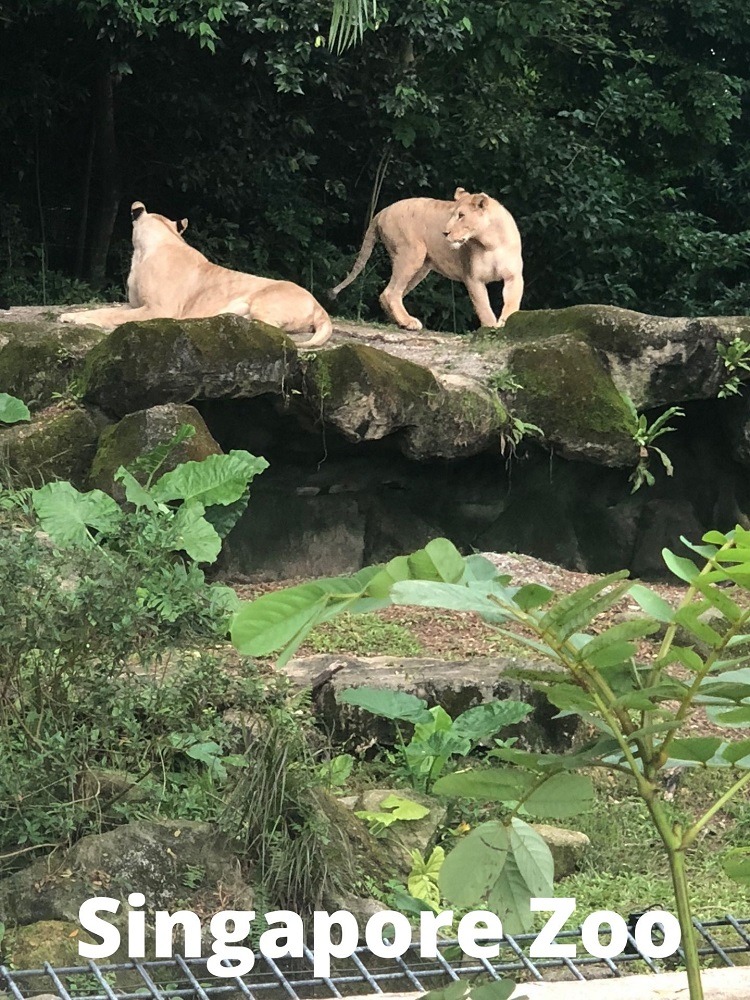
Books
Books, are my most favorite to teach Miss A. This is also because she loves to read and I have seen her relating to more concepts when she reads books about the same.
If you want to introduce wild animals to preschoolers or even babies and toddlers, books are the best way. It is never too early to start reading to your child.
If you are confused of when to start, read the post, What is the Right Age to Start Reading to Babies.
As a parent, you can start with a Wild Animals Touch and Feel Book or My First Book of Wild Animals Board Book.
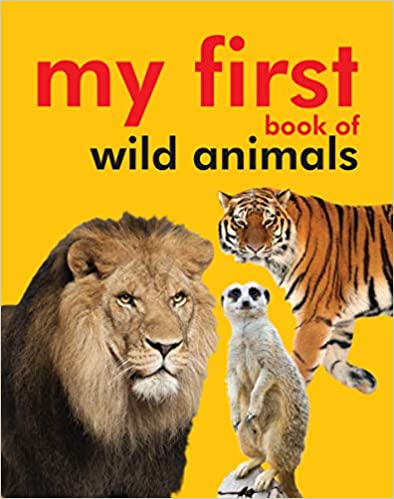
There are many story books which have wild animals and are great for generating curiosity. One great recommendation to start with is Brown Bear, Brown Bear What Do You See.
Visiting National Parks
This comes in as my last recommendation but it is the ideal way to teach kids to respect wildlife. The parks are an ideal way to introduce kids to wild animals and their habitat.
Children understand about different kinds of animals and also understand that the forest is the home of the animals and their privacy must be respected.
This is my last suggestion because many parents are not interested to go to these places and might not be convenient too. If you can and are willing to, a trip should be planned. If not, the above four ways are good to start.
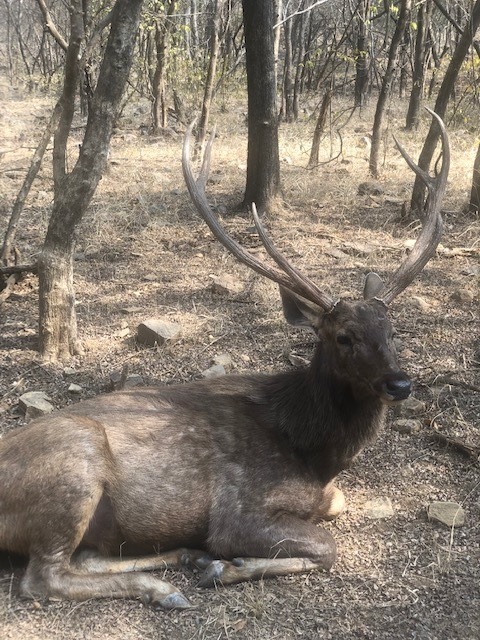
The post by National Geographic on How to Get Kids to Respect Wildlife is an interesting read.
Things to Remember Before Visiting Wildlife Sanctuaries
Visiting national parks is not of interest to many. It is a holiday but it should not be treated as any other holiday.
There are certain things which kids must be taught before they visit national parks. This is because, the kids need to learn to appreciate that the jungle is the home of the animals and not another park for them.
I have often seen posts on social media about parents taking kids for a holiday to any wildlife park. It is important to know and teach them the right code of conduct. This way as a parent you will be able to teach kids to respect wildlife and their home.
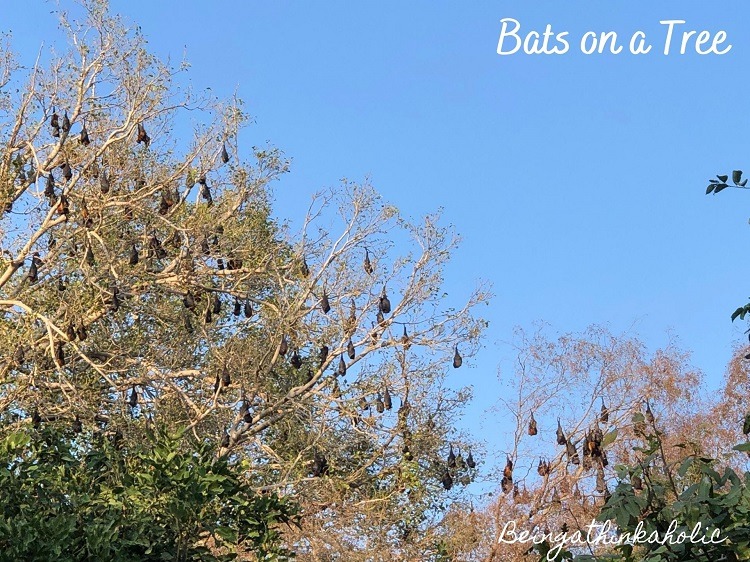
When going to any wildlife sanctuary you must remember:
- Wear clothes that cover you so that there is no insect bite
- Fluorescent and neon clothes are a big no. Even bright colors are not good because they disturb the animals. This can make them scared too.
- Wearing clothes which blend with the surrounding is always better. Thus, browns and greens, are the ideal choice. Clothes that camouflage in the jungle should be the preferred choice.
- Wear shoes and not slippers which expose your feet
- Stay calm and composed and talk in whispers. Any unnecessary noise can get the unwanted attention of animals
- The jungle is the home of the animals and thus, you should not litter it and throw things. This not only can dirty the place but also be harmful to animals
- Phones should always be in silent mode
- Never try to attract the attention of the animals by throwing stones or playing tricks.
Parents must remember and teach kids that the jungle is the home of the animals and we are guests there. We have to let them live peacefully and explore it quietly.

Trip to Ranthambore Wildlife Sanctuary
As you must have understood my love for forests and national parks go back to my childhood, I have always been keen to do the same for Miss A.
She has now been to Jim Corbett National Park, Rajaji National Park and twice to Ranthambore National Park.
All these trips have been educational and are deeply etched in her memory.

Our first trip when she was not even 3, introduced her to a jungle safari and many animals. The highlight was seeing a tigress and how she killed a deer for her hunt.
The second trip was when she was 4.5 and this time she saw tigers, leopard, crocodiles, wild boars, deer, peacocks, birds, monkeys, and langoors.
For those planning a trip to Ranthambore, the following tips might he helpful:
- Book your safari first as these are difficult to get. The options are to book a gypsy or a canter.
- Be prepared for some downtime. Sometimes when the guides hear a call or are sure about the presence of a tiger, they park the vehicle and wait for some time.
- Safari can also be about action when the guides are trying to track the tiger
- There is no phone signal and thus, you cannot communicate, and neither can the guides. That does not mean you can shout and talk to others.
- Yes, we all go to Ranthamore for tigers, but do not get disappointed if you do not see one. Enjoy the jungle and the landscape and also the other animals.
If you have any questions about planning your trip, please feel free to drop me a message or an email.
Kids Are Our Future
We are all doing our bit for saving the environment and nature, but our kids have more responsibility. This is because many of our generation do not still see the urgency to do so.
When we introduce the concepts to our kids and teach them about nature and how to respect animals and wildlife, we can hope for a better future.
To teach kids to respect wildlife is imperative but not difficult. Hope the above tips were helpful. Have you visited any national park with your kids? Do share in comments.
Let us all get together and teach our kids to respect wildlife, how to protect wildlife and let animals live in their natural habitat.
“Animals should not require our permission to live on earth. Animals were given the right to be here long before we arrived”





This is a lovely post Arushi! As the mother of a 4 year old who is obsessed with animals and conserving the planet, I can totally identify with everything you have mentioned here. Respect for animals and nature has to be inculcated right from the beginning!
Thanks Noor. Glad you like the post. 🙂